1. Art-Integrated Landscapes
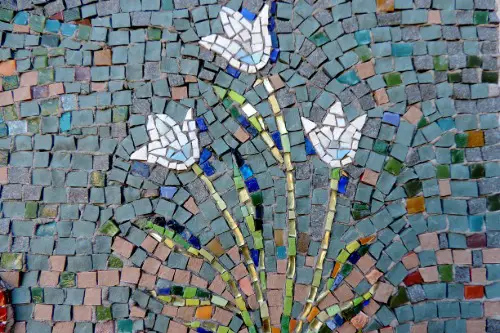
Metal sculptures, mosaics, and ceramic installations are turning desert yards into visual galleries. Combined with gravel beds and native plants, these artistic elements replace traditional grass with curated identity. Landscaping becomes an extension of the homeowner’s narrative. Expression overrides expectation.
By focusing on form rather than foliage, these spaces stand resilient and visually stunning year-round. Art gives rhythm to stillness and invites pause where lawns offered pass-through. Your yard becomes a canvas, not a chore. Culture blooms in the dust.
2. Sculptural Rock Gardens
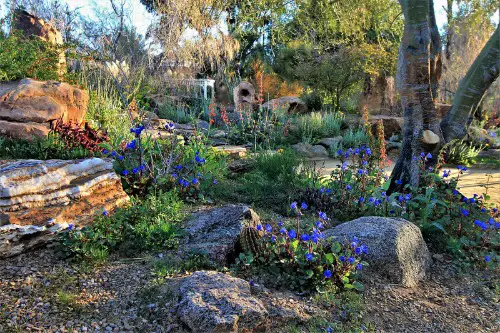
Boulders, river stones, and decomposed granite are turning lawns into miniature mountain scapes. Carefully placed rocks mimic natural formations and help shape microclimates around drought-tolerant plants. It’s zen-inspired landscaping that offers drama without demanding irrigation. Hardscape becomes hero.
Paired with succulents, cacti, or low-growing shrubs, rock gardens provide contrast and depth. They resist heat, stay visually striking year-round, and require virtually no upkeep. These installations feel ancient and intentional. The desert gets elevated—literally.
3. Gravel Courtyards with Native Plants
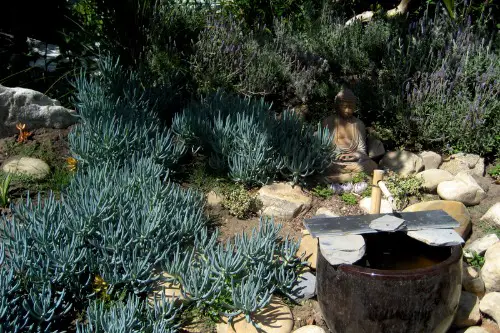
Instead of water-thirsty grass, homeowners are opting for gravel courtyards that showcase native desert flora like agave, ocotillo, and desert spoon. These low-maintenance landscapes handle heat with grace and offer layered texture that’s both aesthetic and ecological. Gravel helps retain moisture, suppress weeds, and supports drainage—perfect for arid zones. It’s structure over saturation.
Placing native plants in clusters adds softness and shade, while open gravel space invites seating and sculpture. The courtyard becomes a canvas for shadow play, movement, and form. You’re not just saving water—you’re building visual rhythm. Grass steps out; stone steps up.
4. Shade Pergolas Over Planted Beds
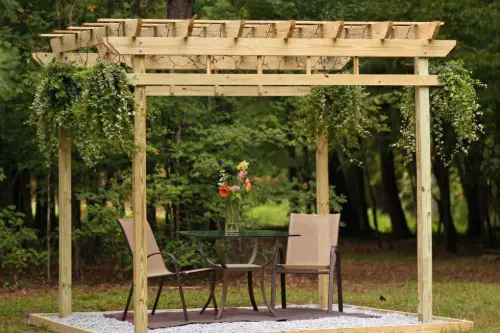
In place of expansive turf, desert homes are constructing pergolas that offer relief while supporting curated garden beds underneath. Shade allows for more plant diversity—like salvias, lantana, or lavender—that wouldn’t survive full sun exposure. The pergola isn’t just a shelter—it’s a framework for life. Lawn yields to lifestyle.
Add draped vines or solar lights for ambiance, and you’ve created an outdoor room that thrives instead of dries out. Pergola gardens blend architecture and ecology. They invite gathering, growing, and grounding. Shade is the new soil.
5. Decorative Concrete Pavers

Large pavers in staggered or grid layouts are replacing grass with walkable art. These surfaces reduce heat absorption and eliminate the need for mowing, watering, or edging. Concrete can be tinted, stamped, or paired with gravel and drought-tolerant greenery for maximum impact. It’s design with a dry conscience.
Spaces between pavers welcome groundcover like woolly thyme or creeping germander—plants that tolerate heat while softening the lines. The look is modern, clean, and endlessly customizable. You’re paving the way to climate-smart beauty. Grass just can’t compete.
6. Rainwater-Harvesting Swales
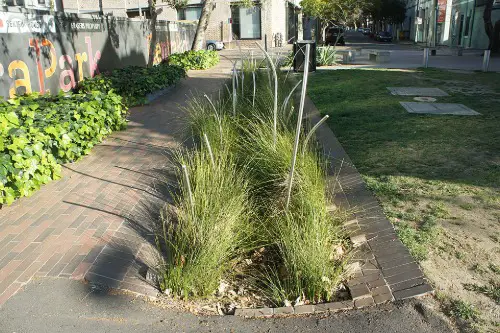
Shallow depressions filled with native plants channel runoff and capture rainwater—turning front yards into hydrological allies. Swales replace lawns with ecosystems that support birds, insects, and water retention. They’re engineered for efficiency but filled with organic charm. Sustainability hides in plain sight.
With strategic planting, these features blossom after storms and remain visually pleasing when dry. Even in deserts, nature finds rhythm when given a little contour. Lawns say “presence,” swales say “purpose.” Function flows where turf once sat still.
7. Mulched Seating Zones
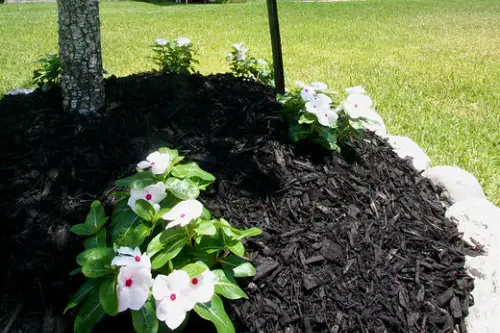
Wood chips, crushed pecan shells, or bark mulch are replacing turf in gathering areas—creating soft, walkable zones that insulate soil and reduce evaporation. These organic materials feel natural underfoot and signal a relaxed, intentional lifestyle. It’s like forest floor meets desert breath. Lawn becomes lounge.
Add Adirondack chairs, fire pits, or side tables for instant community space. Mulch warms in winter, cools in summer, and builds soil health while staying tidy. It’s texture that nurtures. Socializing steps off the grass and onto the earth.
8. Container Garden Clusters
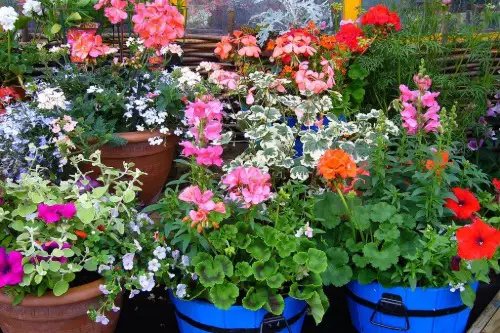
Big ceramic pots, troughs, and modular planters let desert gardeners control soil, water, and sunlight in micro doses—ideal for growing herbs, succulents, or seasonal flowers. Clustering containers replaces lawn areas with flexible, expressive design that can shift with mood or season. It’s portable greenery with personality.
Use pots of varying heights and colors to add visual interest and soften architectural edges. Container gardens make maintenance simpler and bring flora closer to daily life. Where turf sprawled, pots now tell stories. Mobility meets meaning.
This post 8 Garden Features That Are Quietly Replacing Lawns in Desert Homes was first published on Greenhouse Black.
